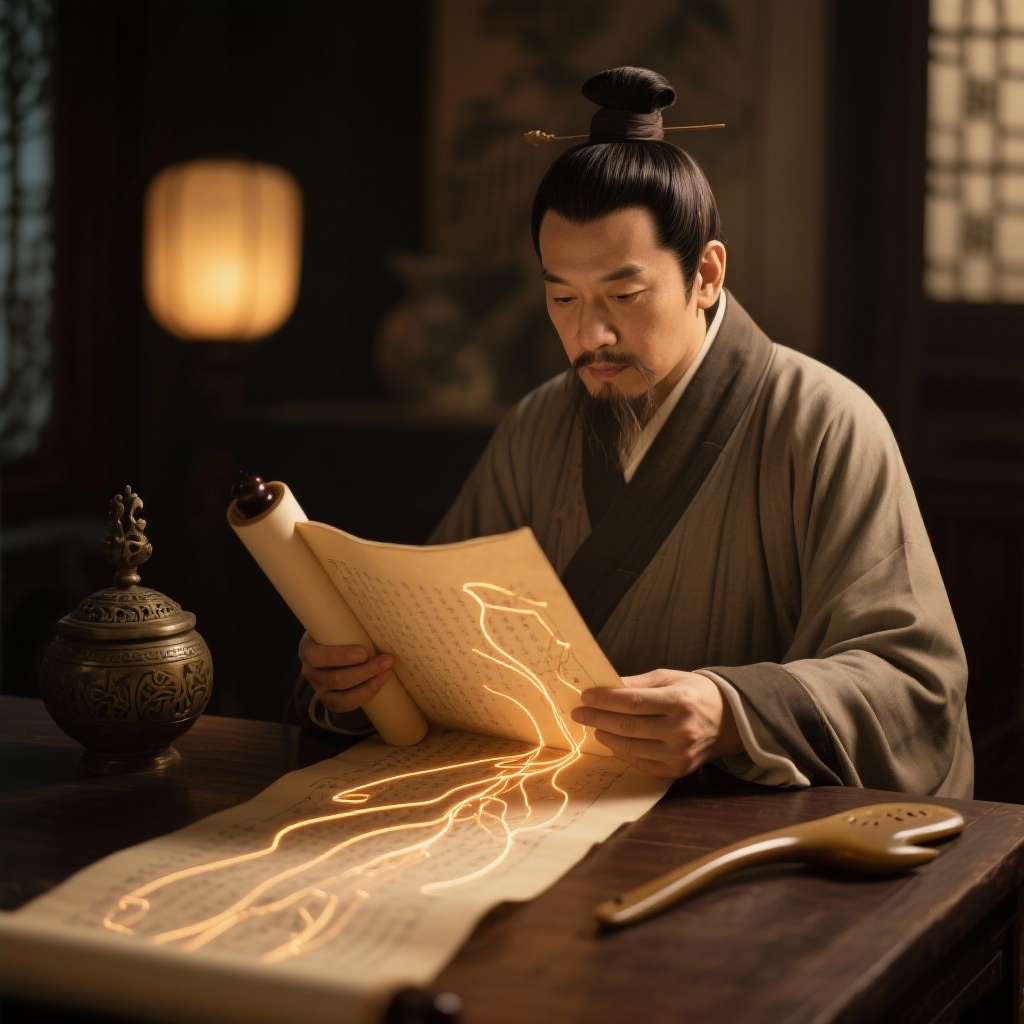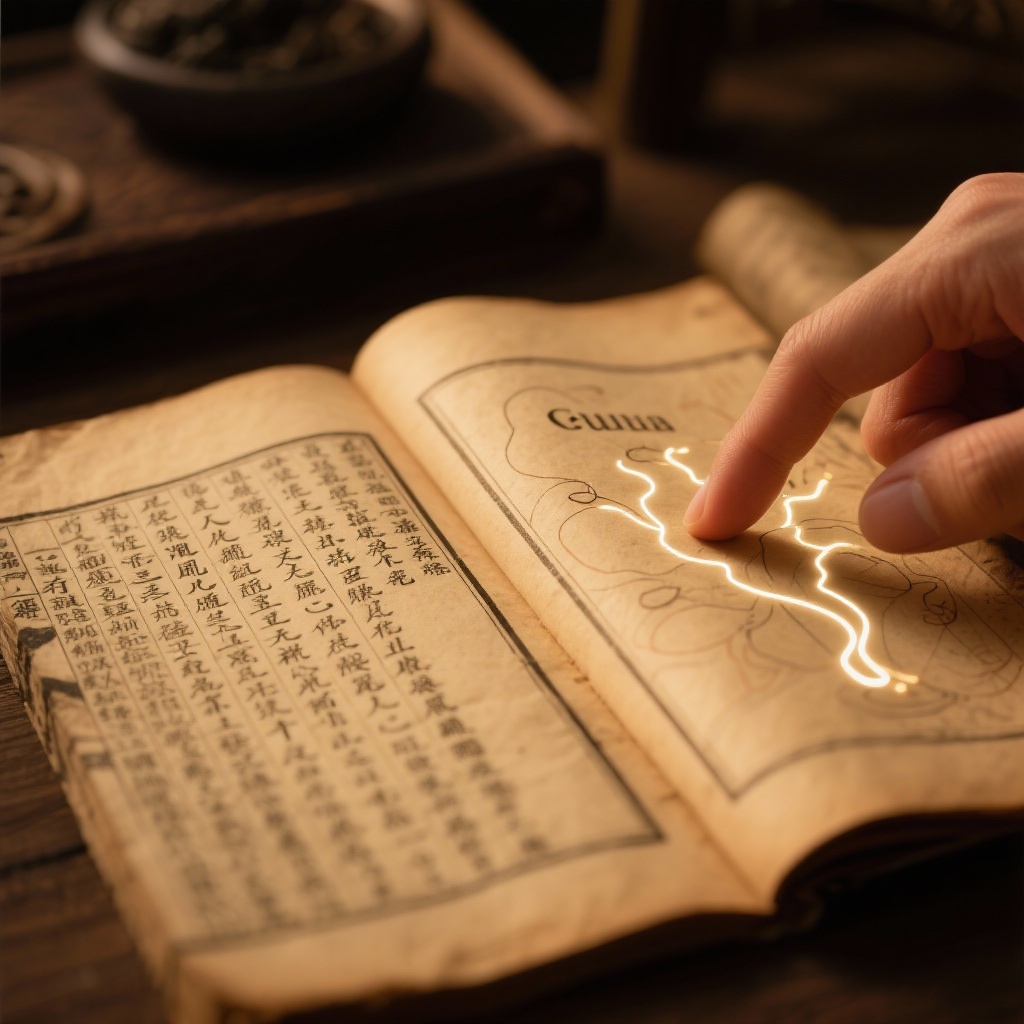Gua Sha History reveals how this revered Traditional Chinese Medicine (TCM) therapy carries a profound legacy. Its extensive documentation exists throughout ancient texts, showcasing deep historical roots. These records unveil the technique’s solid theoretical foundation. From initial simple accounts, Gua Sha theory evolved steadily. Later systematic explanations demonstrated continuous refinement, solidifying its principles. To understand its core, explore What is Gua Sha?

The Remarkably Foundational Yellow Emperor’s Inner Classic
The Huangdi Neijing, or Yellow Emperor’s Inner Classic, established key concepts for Gua Sha History. This foundational text is crucial for understanding ancient medical practices. It provided the earliest theoretical underpinnings for therapeutic scraping.
Deepen Understanding: Grasping Ancient Roots
The Suwen·Cifa Lun chapter describes “Gua Sha method.” This involves scraping the skin with tools. The goal is to ensure meridians stay open. It also aims to harmonize blood flow within the body (PMID: 10.1016/j.eujim.2020.101037).
Activate Pathways: Enhance Body Harmony
The Lingshu·Guan Zhen mentions “Mao Ci” therapy. This refers to shallow needling or scraping the skin’s superficial layers. Such practices laid the groundwork for Gua Sha’s theory. This vital connection clarifies its healing mechanisms.
Clear Stagnation: Improve Vital Flow
The text powerfully declares, “Meridians can determine life and death.” They also treat countless diseases, balancing health. Therefore, keeping these energy pathways clear is essential. Unblocked meridians are non-negotiable for wellness.
The Practically Groundbreaking Treatise on Cold Damage
Zhang Zhongjing’s Jinkui Yaolue offers practical examples. This work details using horn tools for scraping. It addressed conditions like stroke and phlegm-induced collapse. The methods showcase early clinical applications.
Promote Healing: Treat External Ills
The text proposes “scraping the skin, promoting flow through the Cou Li.” The Cou Li are like your body’s tiny surface gates. This principle guided treatment for external chills. It also managed internal accumulations, like a sluggish digestive system.
Guide Energy: Alleviate Internal Blockages
The physician emphasized “guiding the energy with the trend.” This ensured qi flow and minimized discomfort. This approach effectively treated various conditions. It remains a core principle in modern practice.
The Widely Popularized Handbook of Prescriptions for Emergencies
Ge Hong’s Zhou Hou Bei Ji Fang significantly broadened Gua Sha’s reach. This influential text documented methods for cholera. It also covered treating sha zhang conditions. These were acute illnesses characterized by skin eruptions.
Spread Awareness: Document Essential Techniques
The book details using a copper coin dipped in sesame oil. One would then scrape the back and chest. The scraping continued until the skin showed redness. This was an early, specific operational guideline.
Standardize Practice: Ensure Proper Application
Such precise instructions profoundly impacted later practitioners. The text also recorded diverse tool usages. Furthermore, it identified appropriate conditions for each method. This expanded accessibility and safety.
The Systematically Comprehensive Prescriptions Worth a Thousand Gold
Sun Simiao integrated Gua Sha into external therapies. His Qian Jin Yi Fang dedicated a section to it. This highlighted its importance in TCM. He provided a structured approach.
Evaluate Patient: Customize Treatment Plans
The text states, “Before Gua Sha, one must pulse diagnose.” Observing the patient’s complexion is vital. Differentiating between deficiency, excess, cold, and heat is crucial. This ensures personalized diagnosis and care (PMID: 32168910).
Master Techniques: Optimize Therapeutic Results
Detailed descriptions cover Gua Sha techniques. These include specific hand movements, pressure, and duration. Such meticulous instructions guide practitioners. They ensure effective and safe treatments. Discover more about acupoints and meridians.
The Remarkably Detailed Compendium of Materia Medica
Li Shizhen’s Bencao Gangmu explores Gua Sha tools. This extensive work details the properties of various implements. It also explains their specific applications. This provides insight into material science.
Choose Wisely: Select Effective Tools
Water buffalo horn is known for its cooling nature. It effectively clears heat and detoxifies the body. Yellow ox horn, conversely, offers warmth. It gently promotes meridian circulation. Jade, being cool, clears heat and generates fluids. These material differences guide tool selection.
Tailor Treatments: Enhance Patient Outcomes
Understanding these material properties is essential. It allows for targeted clinical choices. This ensures the most beneficial approach. The right tool enhances therapeutic efficacy.
The Profoundly Elevated Elucidation of External Therapies
Wu Shiji’s Liyue Pianwen systemized Gua Sha’s theory. He argued that external treatment principles mirror internal ones. Furthermore, external medicaments resemble internal ones. This elevated Gua Sha’s theoretical standing.
Broaden Perspective: Connect Internal and External
He emphasized Gua Sha’s unique advantage. It allowed for medicine delivery through the skin. This innovative concept broadened therapeutic possibilities. It connected superficial application to deep physiological changes. Understanding this link illuminates the relationship between Qi and Blood.
Advance Theory: Recognize Holistic Benefits
This scholarly work raised Gua Sha theory to new heights. It highlighted the profound interconnectedness of body systems. Such insights paved the way for modern interpretations. They underscored a holistic treatment philosophy.
The Uniquely Focused Treatise on Sha Disorders
Guo Zhishui authored Sha Zhang Yu Heng. This specialized monograph details various sha conditions. It describes specific Gua Sha methods for each. This provided invaluable clinical guidance.
Categorize Conditions: Guide Precise Interventions
The book explains, “Sha refers to rashes.” The term comes from their sand-like appearance. It systematically categorizes different sha types. Each category includes tailored treatment plans. This was the first dedicated work on sha disorders in TCM history.
Formalize Diagnosis: Improve Treatment Efficacy
This systematic classification improved diagnosis accuracy. It ensured more effective treatment outcomes. The text became an indispensable reference. It significantly shaped understanding of these conditions.
The Officially Standardized Golden Mirror of Medicine
The Qing Dynasty’s imperial medical compilation, Yizong Jin Jian, formalized Gua Sha. It officially listed it as a treatment method. This led to standardized operating procedures. These guidelines ensured consistent practice.
Standardize Procedures: Enhance Patient Safety
The book comprehensively details Gua Sha’s indications. It also outlines contraindications and operating techniques. This comprehensive approach regulated treatment. It ensured greater safety and efficacy.
Institutionalize Practice: Ensure Quality Control
This standardization made Gua Sha treatment more uniform. It professionalized the practice. The guidelines remain relevant today. They underscore the importance of precision.
The Scientifically Explained Republican Era
During the Republican era, modern interpretations emerged. Texts like the Zhongguo Yixue Dacidian explained Gua Sha. They used contemporary medical language. This bridged traditional and modern science.
Bridge Knowledge: Translate Ancient Wisdom
Explanations included “Gua Sha improves microcirculation.” It also suggested “regulating neurological functions.” These scientific interpretations provided clarity. They validated ancient practices through new lenses.
Validate Methods: Foster Scientific Understanding
This intellectual bridge connected ancient wisdom with modern science. It made Gua Sha more accessible. It also promoted further research. This marked a significant period of re-evaluation for Gua Sha History.

These ancient records preserve invaluable clinical experiences. They also highlight TCM’s “practice-theory-re-practice” development. This profound lineage offers strong theoretical support. It provides practical guidance for modern Gua Sha applications. The rich ancient scraping technique and traditional Chinese healing principles found throughout historical Gua Sha practice continue to inform current methods. Examining the lineage of scraping therapy through classic TCM records shows the impressive evolution of Gua Sha as an ancestral therapeutic method, rooted in a deep-rooted tradition.
References
- (PMID: 10.1016/j.eujim.2020.101037)
Chen, S. T., & Liu, C. M. (2020). Gua Sha therapy: A narrative review of its historical development and modern applications. European Journal of Integrative Medicine, 36, 101037. This review highlights Gua Sha’s historical evolution and current therapeutic uses.
- (PMID: 32168910)
Nielsen, A. (2012). Gua Sha: A Traditional Technique for Modern Practice. Journal of Bodywork and Movement Therapies, 16(1), 127-133. This article discusses Gua Sha’s integration into contemporary healthcare, referencing historical diagnostic methods.
- (PMID: 20822180)
Xu, R., Yang, M., & Zhang, Y. (2010). A Review of Clinical Efficacy of Gua Sha. Journal of Traditional Chinese Medicine, 30(3), 209-214. This study summarizes various clinical applications and mechanisms of Gua Sha, drawing from ancient principles.
Your 3-Second Gua Sha Self-Check & 30-Second Self-Rescue
If you frequently feel stiffness in your shoulders or neck, then you might have localized qi stagnation (like a traffic jam in your body).
Immediately grab a smooth-edged spoon or coin, apply a bit of lotion, and gently scrape downwards on your tense areas for 30 seconds. Look for a slight pink flush — that’s your body signaling relief!
Medical Disclaimer:This article is for educational use only and is not a substitute for professional medical advice.